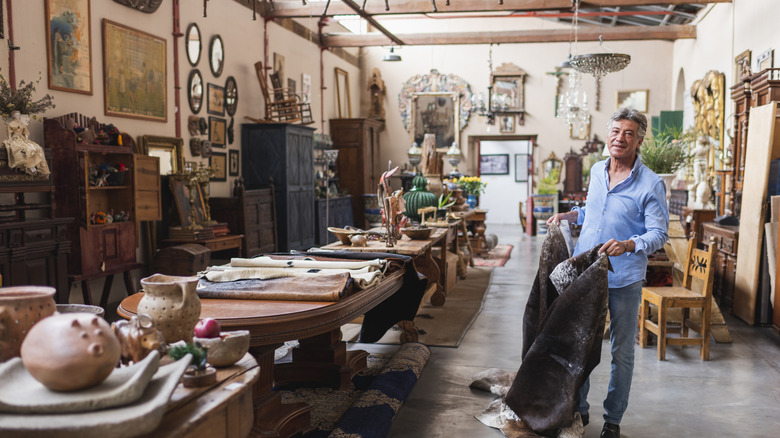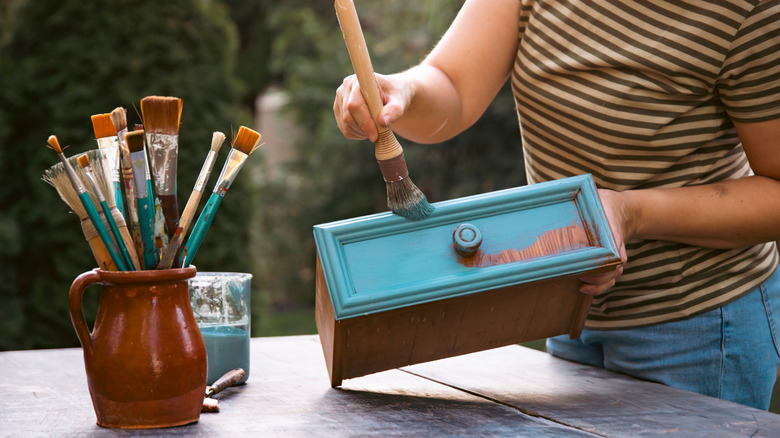The One Rule To Follow That Will Help You Thrift Better Treasures
The benefits of thrift shopping are undeniable — in addition to saving a little coin, you help reduce waste, lessen your environmental impact, and curate a unique style. That said, most secondhand shoppers have felt thrift regret at some point. Whether it was a sweet treasure you left behind or something you brought home that left you with buyer's remorse, thrifting mistakes are part of the process. If you're tired of regrettable thrift store purchases, it's time to focus on this expert tip for thrifting home decor — go beyond aesthetics and look at the bigger picture to find items with good bones.
From home decor to furniture, thrift store finds are better when you look for features like a good shape and solid construction before getting distracted by factors that can easily be changed, such as color. If an item has good bones, you can dye or paint it to make it fit your style. On the flip side, if an item is made from cheap materials or isn't structurally sound, it likely won't last and will end up back at the thrift store or in the landfill.
Part of the bigger picture mentality is looking beyond minor flaws. If an item is the wrong color, needs new hardware, or could use minor embellishments, these are things you can fix to better suit your aesthetic. That said, you still want the base item to be something you can visualize in your home. With a beautiful antique frame, for example, you can usually replace the artwork and paint the frame. But if the frame is too heavy or large for your walls, it's not worth bringing home.
Finding items with good bones at the thrift store
There are plenty of sought-after antique home items people snatch up fast while thrifting, like old chairs, chests, and tables. When on the hunt for these items, look for quality materials that are known to last, like solid wood and genuine leather. For wood pieces, look for a textured grain or any carved details — these are good indicators of solid wood as laminate is smooth and can't be carved. For leather, a simple touch and smell test is all you need. Real leather will feel soft and stretchy and should have an earthy smell. Other quality materials to be on the lookout for include natural fibers, stainless steel, and porcelain.
Outside of the actual materials used, the construction quality is also important. For example, a dresser that's held together with staples and glue will never last as long as something built with quality doweled, dovetailed, or mortise-and-tenon joints. For tables and chairs, check the frames to see if they're sturdy and can hold weight. You can also check the maker's mark to see if the piece was built by a trusted brand.
There are a handful of DIY thrift flips you can start and finish in one weekend, so if an item has good bones and structure, you don't necessarily have to use it for its intended purpose. For example, thrifted fabrics can be used for chic lampshades, and antique dishware can be turned into lanterns or candle holders with just a few tools.

